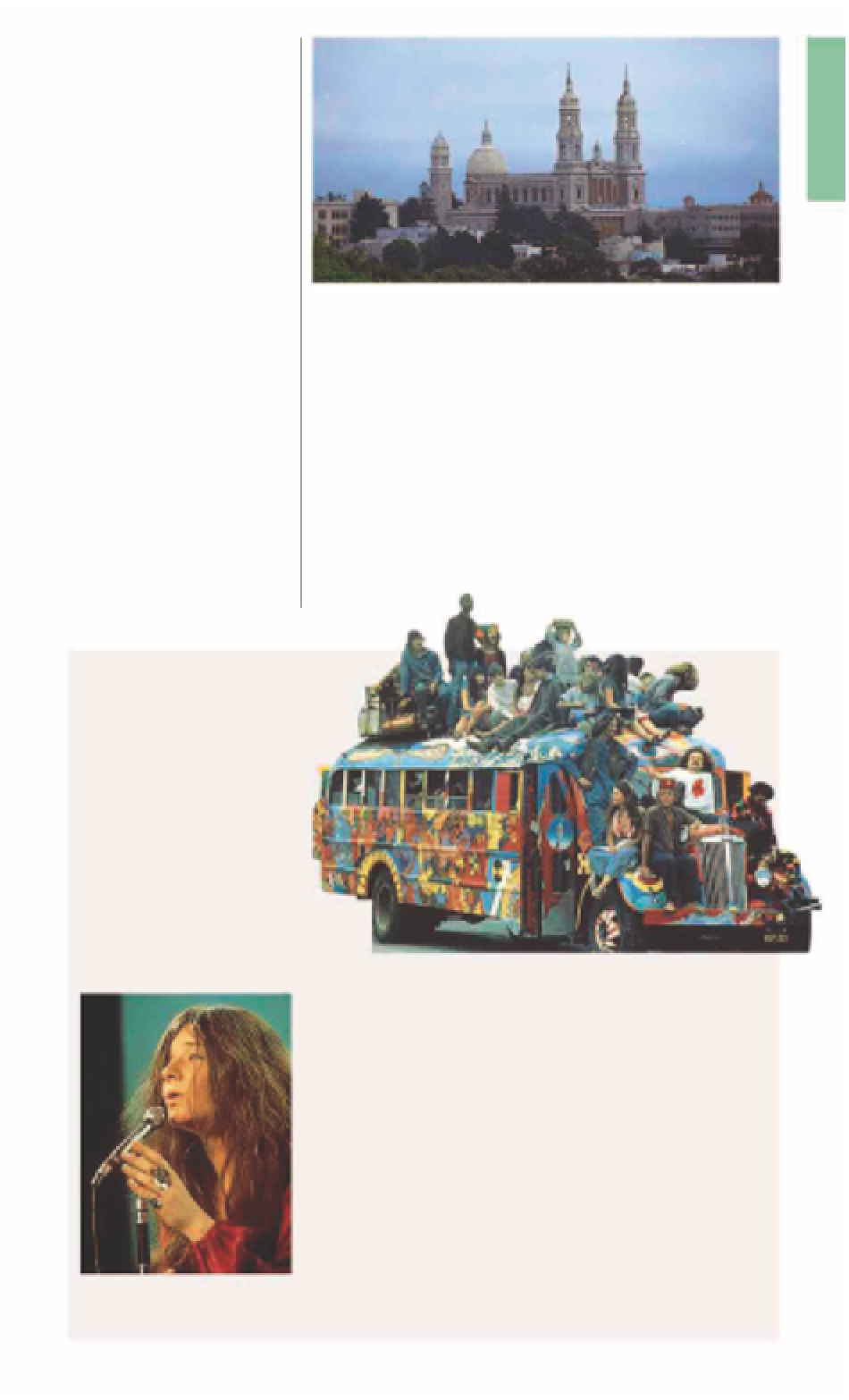Travel Reference
In-Depth Information
e
Alamo Square
Map
4 D5.
@
21, 22.
San Francisco's most photo-
graphed row of colorful Victorian
houses lines the eastern side of
this sloping green square, which
is some 225 ft (68 m) above the
Civic Center, giving grand views
of City Hall backed by the
Financial District skyscrapers.
The square was laid out at the
same time as the pair of Pacific
Heights squares
(see pp72-3)
,
but it developed later and much
more quickly, with speculators
building large numbers of
nearly identical houses.
The “Six Sisters” Queen
Anne-style houses
(see p77)
built in 1895 at 710-20 Steiner
Street are good examples. They
appear on many San Francisco
postcards. So many grand old
Victorian houses line the streets
around Alamo Square that the
area has been declared an
historic district.
St. Ignatius Church on the University of San Francisco campus
r
University of
San Francisco
2130 Fulton St.
Map
3 B5.
Tel
422-5555.
@
5, 21, 33, 43.
∑
usfca.edu
the campus is the striking
St. Ignatius Church, completed
in 1914. Its buff-colored
twin towers are visible from
all over the western half
of San Francisco, especially
when lit up at night. The
university campus and
residential neighborhood
that surrounds it occupy
land that historically formed
San Francisco's main
cemetery district, on and
around Lone Mountain.
Founded in 1855 as St. Ignatius
College, the University of
San Francisco (USF) is still
a Jesuit-run institution, though
classes are now coeducational
and non-denominational.
The landmark of
The Sounds of 1960s
San Francisco
During the Flower Power years
of the late 1960s, and most
notably during the 1967
Summer of Love
(see p34)
, young
people from all over the US
flocked to San Francisco. They
came not just to “turn on, tune
in and drop out,” but also to
listen to music. Bands such as
Janis Joplin's Big Brother and the
Holding Company, Jefferson
Airplane and the Grateful Dead
emerged out of a thriving music
Hippies lounging on a psychedelic bus
scene. They were nurtured at
clubs like the Avalon Ballroom
and the Fillmore Auditorium.
Premier music venues
The Avalon Ballroom, now the
Regency II theater on Van Ness
Avenue, was the first and
most significant rock venue.
Run by Chet Helms and the
Family Dog collective, the
Avalon pioneered the use
of colorful psychedelic posters
by designers such as Stanley
Mouse and Alton Kelly.
Fillmore Auditorium, facing
the Japan Center
(see p130)
,
used to be a church hall. In 1965
it was taken over by rock
impresario Bill Graham, after
whom the Civic Auditorium
(see p128)
is named. Graham put
such unlikely pairs as Miles Davis
and the Grateful Dead on the
same bill, and brought in big-
name performers from Jimi
Hendrix to The Who. The
Fillmore was damaged in the
1989 earthquake but reopened
in 1994.
Bill Graham also opened the
Winterland and the Fillmore
East, and by the time he died
in 1992 he became one of the
most successful rock music
promoters in the US.
Janis Joplin (1943-70), hard-edged
blues singer



































